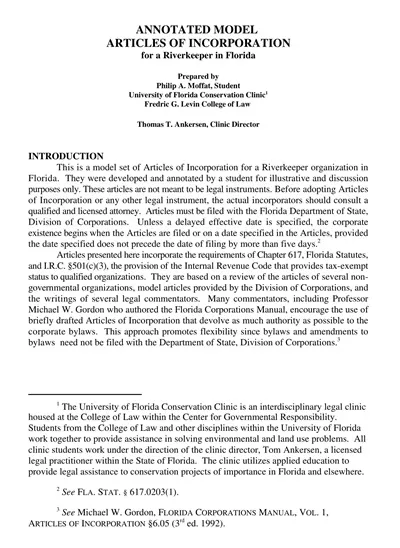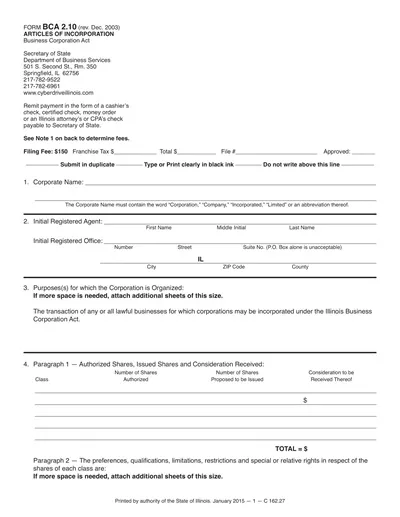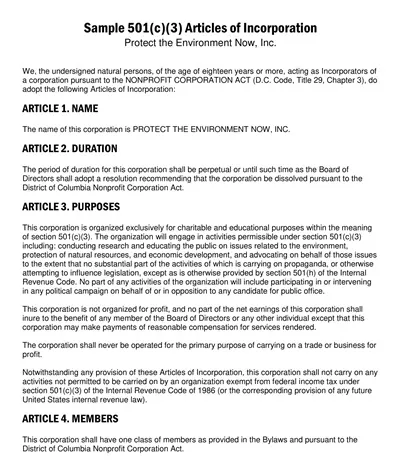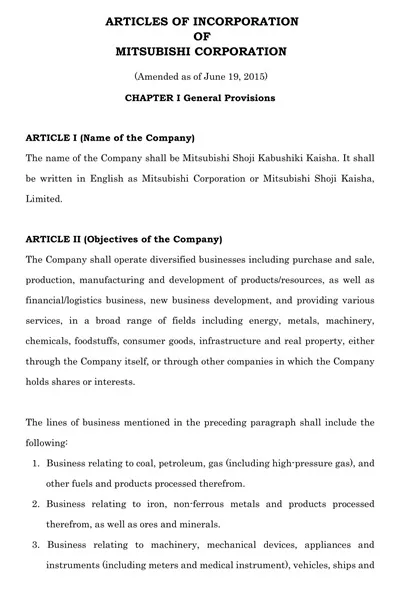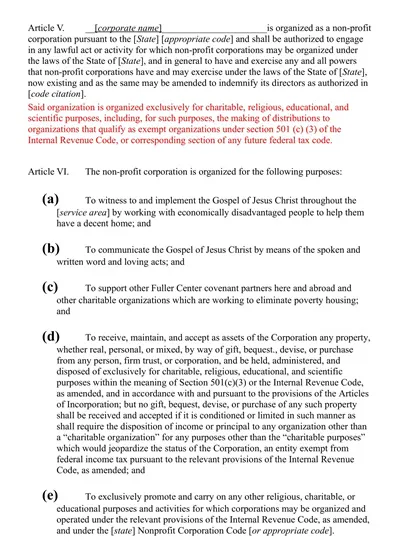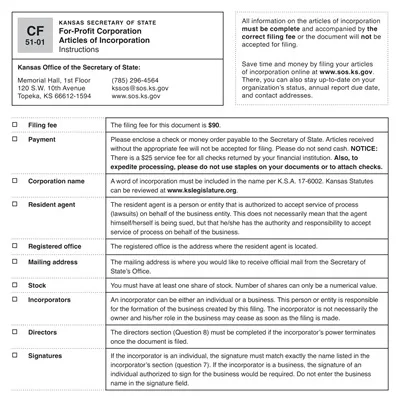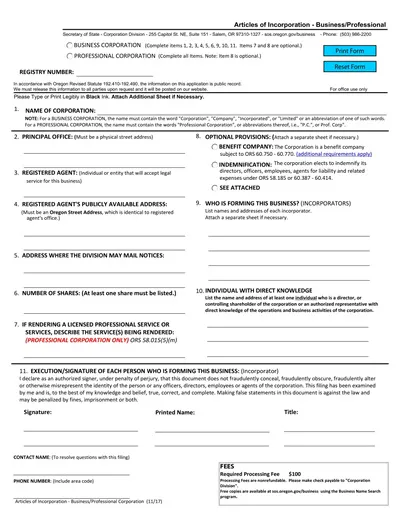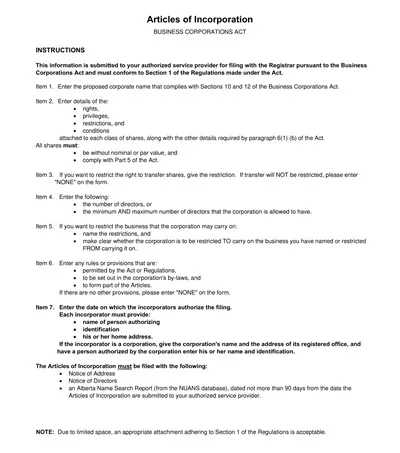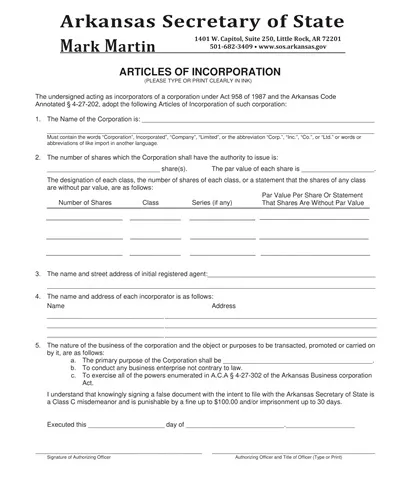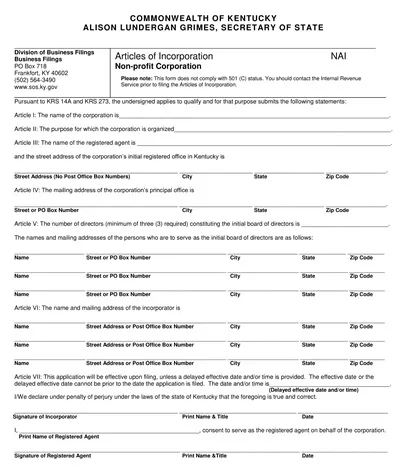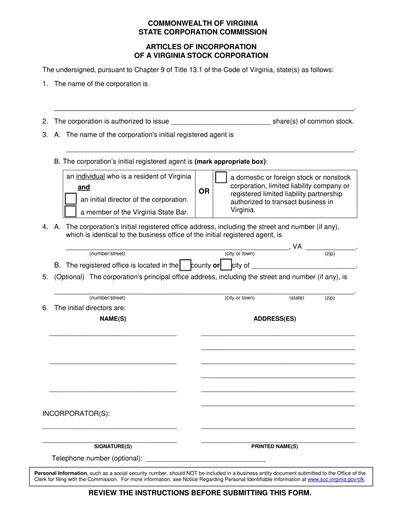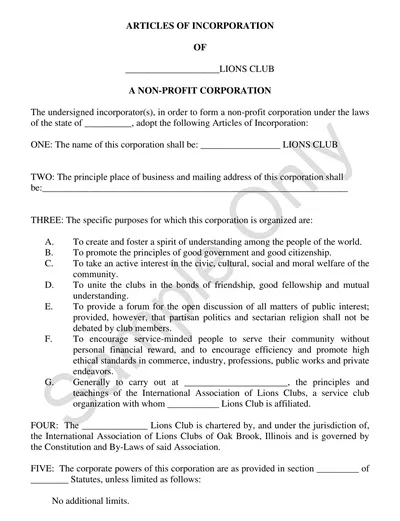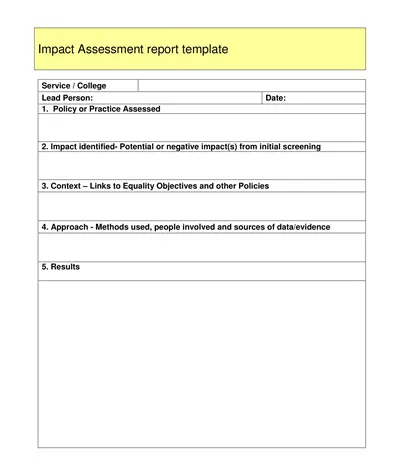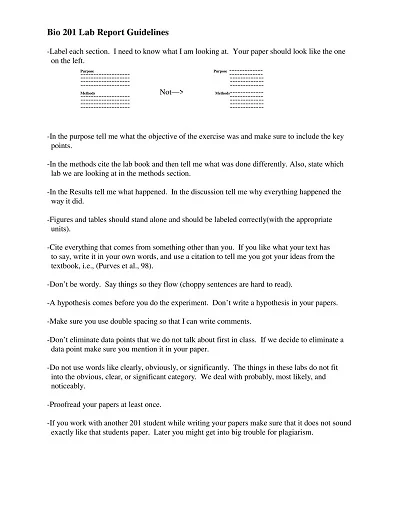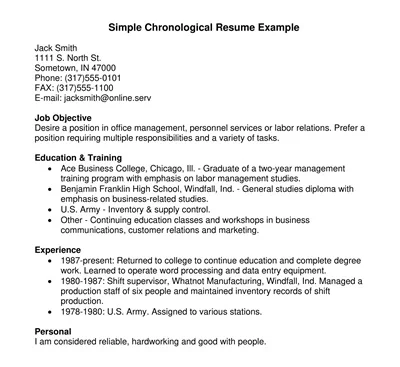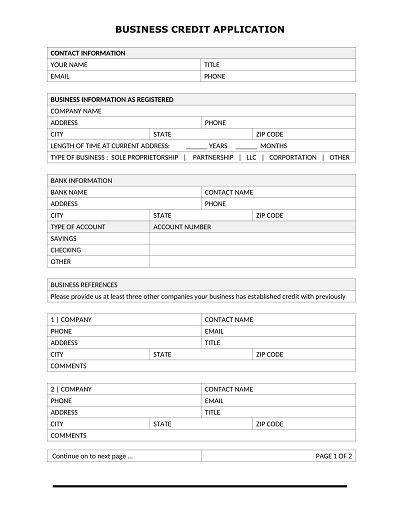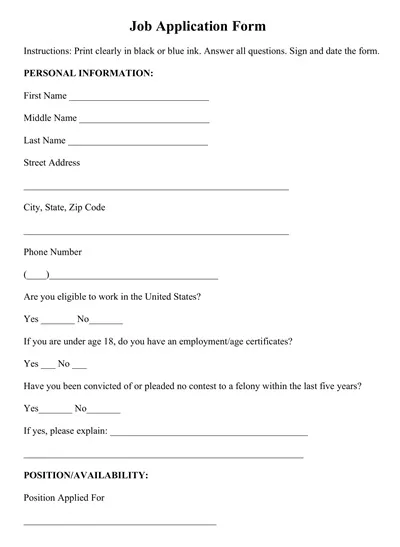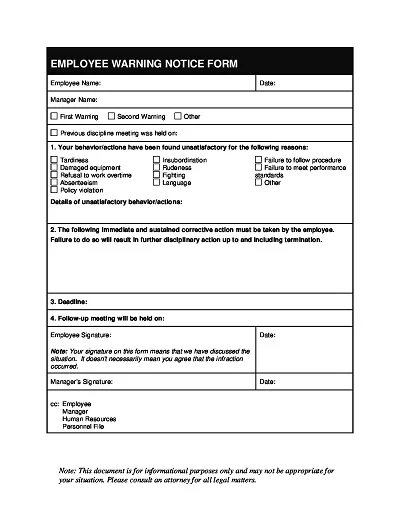An Articles of Incorporation template for corporation establishment serves as the document needed to create a corporation as a legal entity officially. The document provides vital information about the corporation, including its name, purpose, and principal address, while incorporating the registered agent and the board of directors structure.
An incorporated entity must include documentation specifying the maximum number of shares, their classification, and other details. The Articles of Incorporation are a fundamental requirement for corporations, enabling them to obtain official state recognition by submitting documents to relevant state agencies for legal compliance.
Download Free Sample Articles of Incorporation Templates
What are Articles of Incorporation?
The lawful establishment of corporations depends on Articles of Incorporation representing official legal documents. The documents contain essential information about the corporation, including its corporate name and official address, its overall objective, and its founding directors. These documents produce an official agreement between the corporation and the state for enforcing rules and regulations.
Making Articles of Incorporation official with the appropriate government authority grants businesses legal recognition to function as a new entity independently from its owners. Through this procedure, the business acquires legal protection against liabilities while gaining the option to obtain funds by sharing stock.
Key Elements of Articles of Incorporation
The typical information included in Articles of Incorporation includes the following elements:
- A corporation must establish its legal operating name before incorporation as a unique identity based on state regulations.
- A corporation requires its main registration address to be included within this section.
- The statement defines the business activities and the corporation.
- The person or company who serves as the nominating recipient of official documents for the corporation must be identified through this section.
- The corporation can issue maximum stock values and share categories, including common and preferred stock.
- Initial Directors include the complete information of the people who will start serving on the board during the educational period.
- The corporation maintains duration status as a time-limited entity or an organization with perpetual existence.
- The core elements of Articles of Incorporation must include complete legal essentials enabling establishment and regulatory compliance for the corporation.
Importance of Articles of Incorporation
Corporations need Articles of Incorporation as their basic organizational foundation to fulfil legal requirements and organizational operation needs. State recognition of business operations starts from Articles of Incorporation which also define essential operational guidelines for corporate governance. State law compliance meets with founder protection through this document, establishing vital factors such as liability coverage and corporate organization and governance systems.
The operational structure of the corporation becomes transparent through the Articles of Incorporation by defining corporate objectives along with its maximum share value and important leadership positions. The docdocument’sear information enables all stakeholders, including investors, to trust and believe in the corporation. The lack of well-drafted Articles of Incorporation leads corporations to experience difficulties with the law, operational challenges and reduced respect in the industry.
Common Mistakes to Avoid When Filing Articles of Incorporation
Conducting a proper filing for Articles of Incorporation is essential to creating a corporation. Any mistake in this stage may cause submission delays, administrative issues, and possible application rejection. A brief list of usual filing errors appears below, alongside corresponding strategies for their prevention:
1. Omitting Required Information
Every state requires particular information to be present in Articles of Incorporation documents including corporate name and purpose statement along with a registered agent and stock details. Any missing crucial information in the application submission will cause the filing to be rejected. Avoiding such errors requires researching every requirement in your chosen state while using the available templates or guidelines as guidance.
2. Choosing a Non-Compliant Corporate Name
Selecting existing corporate names or names not compliant with state regulations is among the most common incorporation mistakes. Each state demands corporations add “In,”.” o”, “Co”, and portion” t” to their name while also requiring the name to differ from existing business names. A check for available names through an official search system will stop problems before the paperwork submission process.
3. Neglecting to Appoint a Registered Agent
The role of a registered agent consists of accepting both the service of processing documents and essential legal correspondence for corporations. The failure to name an agent, together with insufficient agent information delivery, creates significant delays. Every formation application requires you to select a trustworthy agent whose complete details, including name and address, must be included.
4. Misstating the CorCorporation’srpose
Multiple corporations define their mission through general language, but incorrect or ambiguous statements may lead to legal disputes in some geographic areas. Your corcorporation’srpose should meet formation state regulations and describe the operational activities you plan to perform.
Frequent incorrectness occurs when reporting authorized shares along with their par value information. False data transmission affects how investors perceive the business along with compliance requirements. Review the corcorporation’sare structure with advisors to validate its accuracy and precision.
6. Failing to File Articles of Incorporation in the Proper Jurisdiction
Certain entrepreneurs mistakenly file in the incorrect state jurisdiction, causing excessive procedural difficulties. Fill and submit Articles of Incorporation according to your corcorporation’srisdiction or where legal registration exists.
7. Skipping Legal or Professional Review
The absence of professional guidance during Article of Incorporation preparation results in incorrect and improperly completed filing paperwork. Consulting with a business formation specialist or attorney should happen before filing Articles of Incorporation because they will ensure the document meets legal requirements.
Preparing these typical matters enables business incorporation to become more efficient while minimizing delays, thus establishing a solid operational base.
Legal Requirements for Articles of Incorporation
To prove the validity of a corporation, all Articles of Incorporation must satisfy particular legal specifications. The Articles of Incorporation must include two mandatory elements: a distinctive business name that meets state regulations and a clear definition of the business activities. A corporation must disclose its registered agent and designated address to receive legal documents and the primary location where the corporation operates.
The Articles need to specify both the full share authorization and the applications. The legal requirements demand details about the directors who will serve as the first leadership team for managing the corporation. Comprehensive adherence to state regulations with all included elements ensures future avoidance of legal problems.
How to Create an Articles of Incorporation Template
The template creation process for Articles of Incorporation requires proper organization of essential sections alongside legal compliance standards. There are four steps which build an effective template as follows:
- Researching the rules and regulations for Articles of Incorporation, which each state uses, remains essential since your jurisdiction requires specific requirements.
- The template should contain all obligatory components, including the name of the corporation and its purpose, the registered details, share structure information, and signature spaces.
- The template needs straightforward wording, which should be direct enough to prevent confusion in future legal cases.
- The document must clearly define all essential organizational roles, including directors and officers because this creates transparency and ensures accountability.
- A legal professional should review the template before use to verify its compliance and precision.
Good incorporation process outcomes can result from applying a standardized Articles of Incorporation template, which follows legal requirements, decreases time expenditure, and protects against possible legal challenges. All modifications in the corcorporation’sructure or operations need regular updates to the document.

